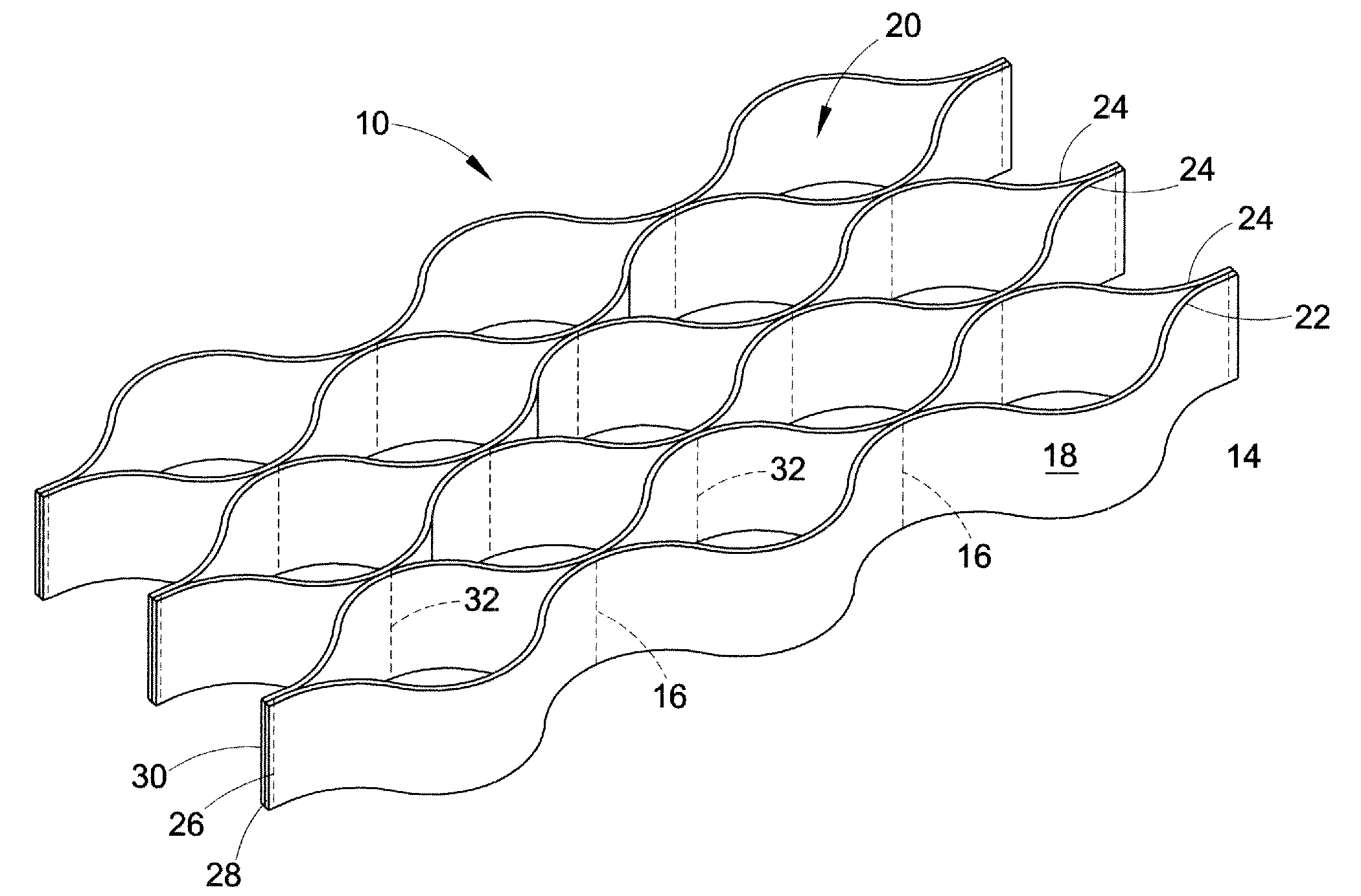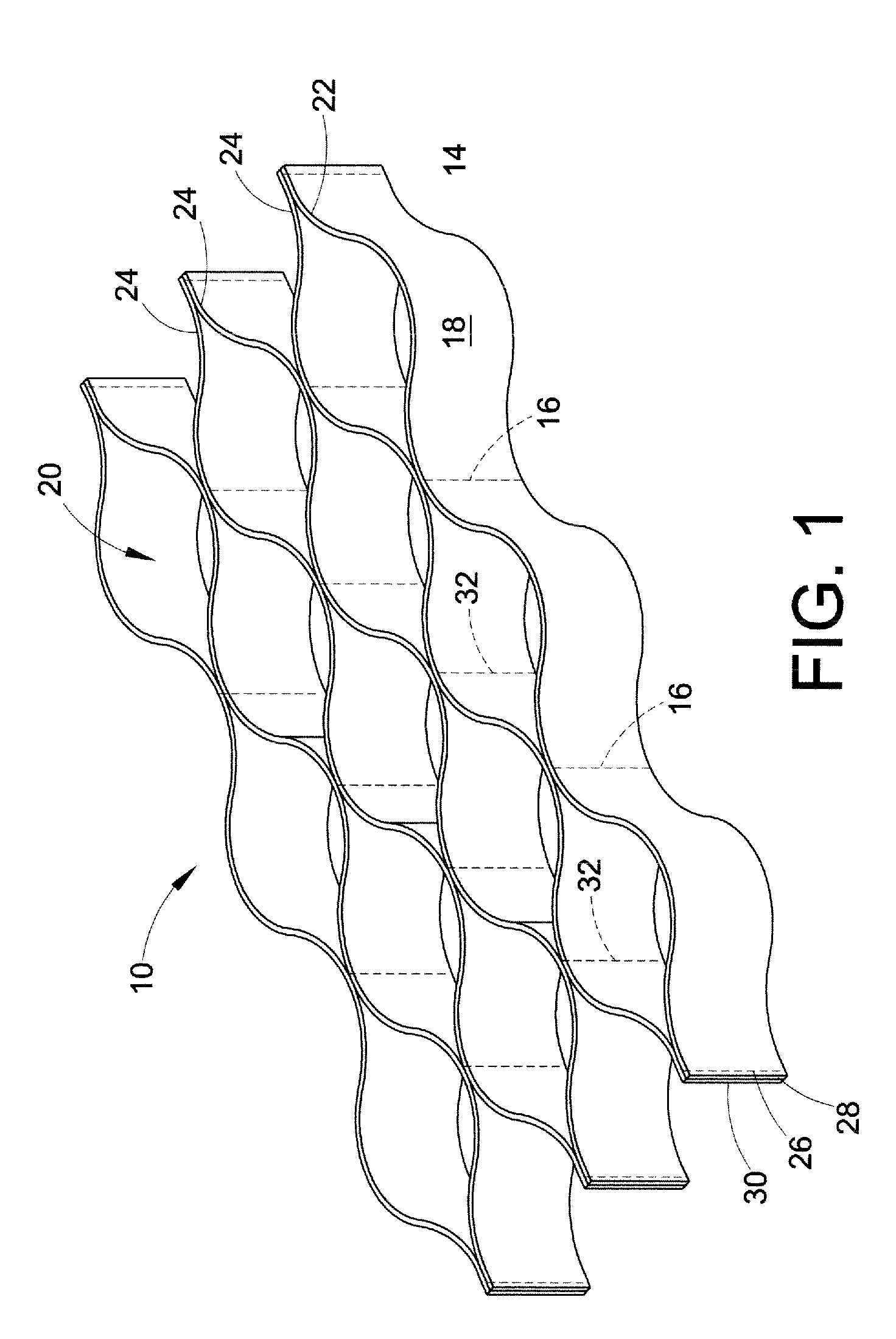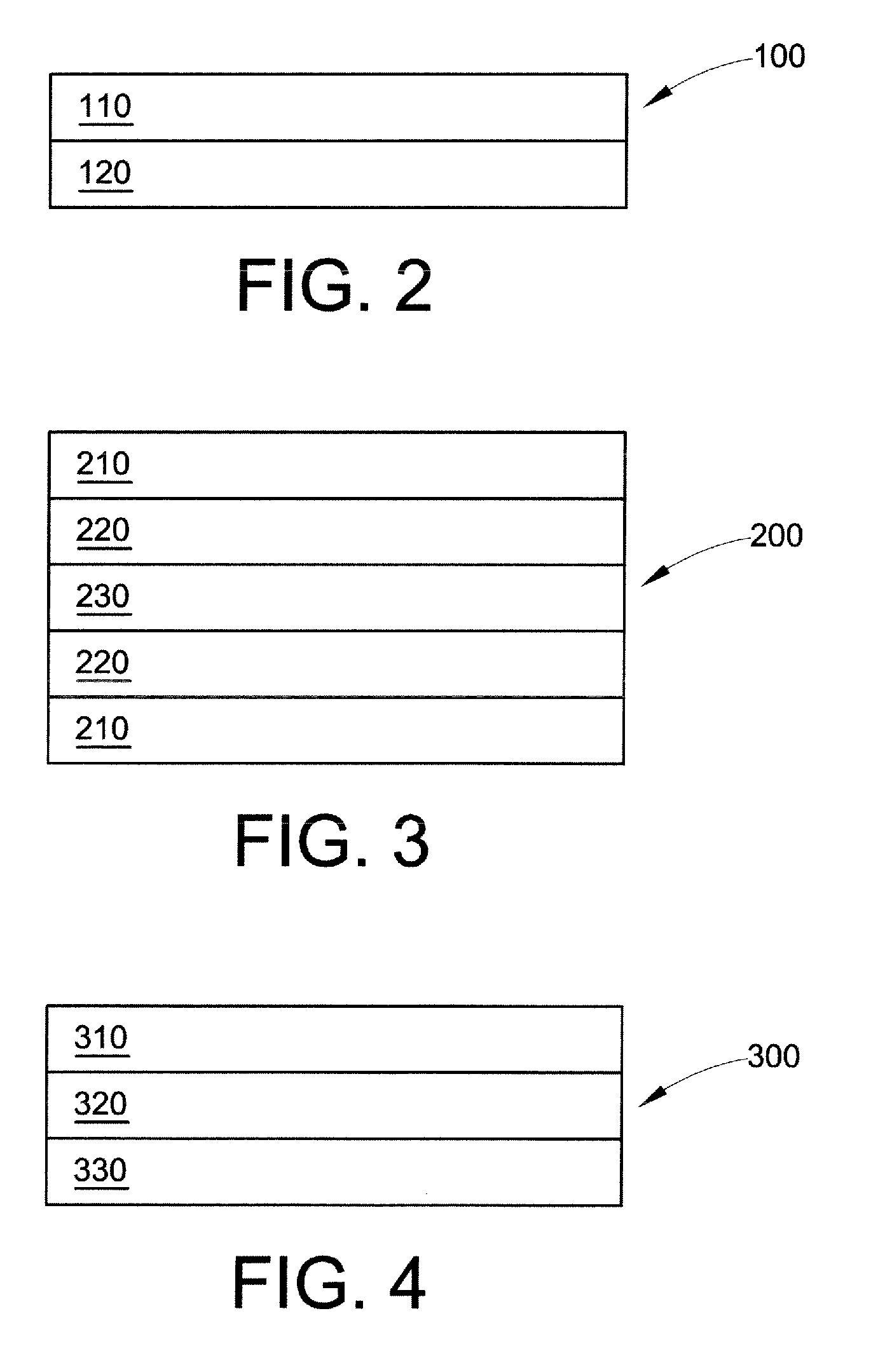Geocell for load support applications
a load support and geosynthetic technology, applied in the field of cell confinement system, can solve the problems of limiting the use of two-dimensional geosynthetics to relatively expensive granular materials, insufficient strength for load support applications, and dramatic deterioration of storage modulus, so as to achieve sufficient stiffness and accept high stresses
- Summary
- Abstract
- Description
- Claims
- Application Information
AI Technical Summary
Benefits of technology
Problems solved by technology
Method used
Image
Examples
example 1
[0084]An HDPE strip was extruded, and embossed to provide a texture similar to Comparative Example 1. The strip had a thickness of 1.7 mm, and was then stretched at a temperature of 100° C. (on the strip surface) so that the length was increased by 50% and the thickness was reduced by 25%. The stress-strain response of this HDPE strip was measured according to the Izhar procedure and is shown in Table 2.
TABLE 2Stress (MPa)810.812.513.714.515.215.816.517.3Strain (%)1.93.34.866.67.68.810.512
[0085]The strip of Example 1 maintained an elastic response up through 12% strain without a yield point and without reaching its plastic limit and at stresses greater than 17 MPa. The recovery of initial dimensions, after release of load, was close to 100%.
example 2
[0086]A high performance polymeric alloy composition comprising 12 wt % polyamide 12, 10 wt % polybutylene terephthalate, 5% polyethylene grafted by maleic anhydride compatibilizer (Bondyram® 5001 manufactured by Polyram), and 73% HDPE was extruded to form a texturized sheet of 1.5 mm thickness. The stress-strain response of a strip formed from the composition was measured according to the Izhar procedure and is shown in Table 3.
TABLE 3Stress (MPa)810.812.513.714.515.215.816.517.3Strain (%)1.93.65.26.87.98.9101214
[0087]The strip of Example 2 maintained an elastic response up through 14% strain and at stresses greater than 17 MPa, without a yield point and without reaching its plastic limit. The recovery of initial dimensions, after release of load, was close to 100%.
[0088]FIG. 5 is a graph showing the stress-strain results for Comparative Example 1, Example 1, and Example 2. An additional point at (0,0) has been added for each result. As can be seen, Example 1 and Example 2 have no ...
example 3
[0090]Two cells were tested to demonstrate the improvement in granular material reinforcement and increased load-bearing capacity. These cells were a single cell, not a complete geocell. As a control, one cell corresponding to Comparative Example 1 was used. For comparison, a cell was made from a composition according to Example 2, texturized, and had a thickness of 1.5 mm.
[0091]The walls of each cell were 10 cm high, 33 cm between seams, embossed, non perforated, and had a thickness of 1.5 mm. The cell was opened so that its long “radius” was about 260 mm and its short radius was about 185 mm. A sandbox of 800 mm length and 800 mm width was filled to 20 mm depth with sand. The sand gradation distribution is provided in Table 4.
TABLE 4Sieve aperture (mm)0.250.50.75124Cumulative Passing %10-2035-5550-7060-8080-9090-100
[0092]The cell was placed on the surface of this sand and filled with the same sand. The expanded cell had a roughly elliptical shape, about 260 mm on the long axis and...
PUM
| Property | Measurement | Unit |
|---|---|---|
| frequency | aaaaa | aaaaa |
| storage modulus | aaaaa | aaaaa |
| storage modulus | aaaaa | aaaaa |
Abstract
Description
Claims
Application Information
 Login to View More
Login to View More - R&D
- Intellectual Property
- Life Sciences
- Materials
- Tech Scout
- Unparalleled Data Quality
- Higher Quality Content
- 60% Fewer Hallucinations
Browse by: Latest US Patents, China's latest patents, Technical Efficacy Thesaurus, Application Domain, Technology Topic, Popular Technical Reports.
© 2025 PatSnap. All rights reserved.Legal|Privacy policy|Modern Slavery Act Transparency Statement|Sitemap|About US| Contact US: help@patsnap.com



